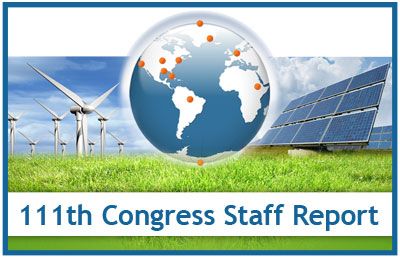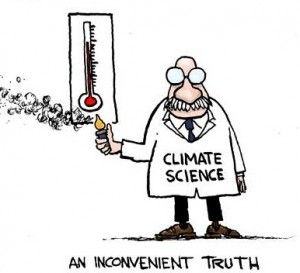CA Energy Schemes: ‘We are getting fleeced’
April 5, 2012
By Katy Grimes
The California Air Resources Board has created a stealthy new corporation in Delaware. The Western Climate Initiative Inc., which will manage cap-and-trade programs, even has its own form of currency.
WCI Inc. says it exists “to perform administrative and technical services to support the carbon trading market, including market monitoring of allowance auctions, and market trading of compliance instruments.”
“CARB is creating a whole new currency with these pollution certificates,” explained Assemblywoman Diane Harkey, R-Dana Point. “Initially the state was to unite with other Western states to reduce the purported menace to the future of our planet,” Harkey said. “However, our partners determined that they would prefer not to tackle the issue during a recession; the cost of making their states less competitive in a tough business environment outweighed the benefit.”
Harkey has been trying to get her legislative colleagues to understand that the “fix,” setting a goal to reduce greenhouse gas emissions to 1990 levels, with increasing population on the horizon, “is guaranteed to cost employers and everyday people more for the electricity and products they need. California’s only remaining partner is the Canadian province of Quebec.”
At a recent legislative hearing with CARB officials, Harkey asked why WCI was registered in Delaware and not in California. But CARB’s Richard Corey couldn’t provide a legitimate reason. “WCI is an established … it’s a program to link with others,” Corey said. “Many California companies are incorporated in Delaware, like Chevron and Disney,” Corey added. “And the Delaware incorporation law is taught in law schools around the country. It was on the advice of counsel.”
“California has Sunshine laws and open hearing regulations,” Harkey said. “We have public funds we are dealing with here, not like Chevron or Disney.” Harkey noted that Delaware is not subject to California state open meeting or sunshine laws, leaving many questioning why the WCI opted for such secrecy.
The WCI Board of Directors is made up of Matt Rodriquez, the newly appointed secretary for the California Environmental Protection Agency; James Goldstene, CARB chairman and CEO; and the equivalent officials for the Canadian provinces of British Columbia and Quebec. No other America states are involved.
The Fleecing Game
Imagine 50 million Californians living on less water and electricity than 38 million Golden Staters do now. That’s the scheme being hatched by some state officials and legislators. With the state’s population growing at about 3.4 million a decade, the 50 million figure should be reached around 2040.
 Instead of addressing the historic economic and energy problems in the state, Democratic Gov. Jerry Brown continues to push the High-Speed Rail plan. This week its supposed cost was scaled back from $98 billion to a mere $68 billion.
Instead of addressing the historic economic and energy problems in the state, Democratic Gov. Jerry Brown continues to push the High-Speed Rail plan. This week its supposed cost was scaled back from $98 billion to a mere $68 billion.
To fund his pet choo-choo, now he’s pushing a cap-and-trade program to sell carbon credits.
Brown and public employee unions have also proposed a $9 billion tax-increase ballot initiative.
California is no longer a manufacturing leader, but is leading the country in manufacturing schemes.
Schemes
Top of the list of schemes is cap-and-trade, or emission trading–a way to tax residents and businesses by another name.
Throw in renewable energy mandates and the implementation of AB 32, the Global Warming Solutions Act of 2006, and it’s clear state leaders are closing their eyes as the California Express runs off the rails.
Legislators are still too busy patting themselves on the back for passage of the extreme Renewable Portfolio Standard last year. But lawmakers will soon be forced to address the impending energy crisis their own laws caused. That’s because their renewable energy mandates won’t be able to power the Golden State.
You Pat My Back, I’ll Pat Yours
The California Independent System Operator, is a quasi-governmental agency which regulates the reliability of the state’s energy grid. In a recent study, it warned that, as California tries to meet the stringent requirements of the Renewable Portfolio Standard of 33 percent renewable energy production, “so does the need for flexible capacity resources.”
The study continued, “Integrating a 33 percent Renewable Portfolio Standard creates several new challenges for the ISO. Among these challenges is ensuring that the ISO has sufficient flexible capacity to address the added variability and unpredictability created by intermittent resources.”
The “intermittent resources” referred to by CalISO are wind, solar, algae, ethanol and all other earth-friendly fuels. While they are not consistently reliable energy sources, most can serve as intermittent alternatives.
The 33 percent figure is the highest in the country after the Legislature pushed through and passed the environmentally restrictive Renewable Portfolio Standard. It mandates that California obtain 33 percent of all electricity from renewable resources by 2020. This figure includes all of the energy purchased outside of California. Energy experts say that California purchases more than 30 percent of its energy from out of state.
Carbon Trading Scheme
It appears that CalISO doesn’t believe that meeting the 33 percent renewable energy mandate is possible. Its study said, “California is making plans to link the cap-and-trade system with that of Quebec in 2012, under the auspices of the Western Climate Initiative, but challenges remain as allowances trade at record lows.” So far, no other countries are interested in participating in trading carbon credits.
However, the California-Quebec relationship is not trading apples-to-apples: Quebec gets 97 percent of its energy from hydroelectric sources. California is trying to reduce traditional electricity production, including hydroelectric power, and instead replace it with as much “renewable” energy as possible from wind and solar, algae and ethanol. But energy experts have been saying in recent months that California’s energy demand is too much for the alternative energy and lower usage standards.
Additionally, Quebec has only 80 regulated industries; California regulates more than 300 industries.
“This will create the largest carbon market in North America and provide a model that can guide future efforts to establish a creative road map for future national approaches in Canada and the U.S. to reduce greenhouse gas emissions,” said Western Climate Initiative Inc. co-chairmen James Goldstene, executive officer of the California Air Resources Board, and Jim Whitestone of Ontario’s Ministry of the Environment, at a recent hearing about cap-and-trade.
CARB officials plan on giving away free carbon allowances for the first auction “to the State’s large industrial emitters as well as the State’s electric utilities in order to reduce the economic impact of the cap-and-trade program,” a background paper explained.
But it appears that state officials have quietly recognized that selling carbon credits could actually do more damage to the state. The first carbon auction has been postponed from August to after the November election — with little comment, and no fanfare.
Carbon Currency
California’s new cap-and-trade program places a limit on greenhouse gas emissions from the businesses and entities responsible for approximately 80 percent of the state’s greenhouse gas emissions. CARB will issue carbon allowances to these businesses and entities, which will be able to turn around and sell them to other businesses on the open market.
The “cap” is the state-imposed limit on businesses that emit greenhouse gasses, and the “trade” is the sale of carbon credits to other businesses. It’s the ultimate example of the government picking which businesses get to survive, and which will not, because not just anyone can purchase or sell carbon credits. Only the businesses chosen by CARB get to sell, and profit, from selling carbon credits to polluters.
Businesses will be limited on how many credits they can purchase. If a business produces more carbon emissions than the state allotted, CARB will issue stiff fines and penalties. Or the business can just reduce their production output and lose money instead.
Cap-and-trad emission credits are not a new scheme. For years, the state’s many air quality management districts have been requiring certain polluting businesses to purchase “clean air credits” from larger government approved companies, which were allowed to purchase up most of the credits. It’s a government run pay-to-play scheme.
“The capital gains from trading in the new currency of pollution ‘allowance certificates’ could very well create the next boom and bust cycle for our state if the scheme works as planned,” Harkey said. “With the creation of a carbon market for pollution, California will be monetizing pollution and charging businesses and residents for the air we breathe. We are getting fleeced.”
Related Articles
CA “community solar” fight looms on subsidy issue
Hawaii’s boom in residential solar power is inspiring advocates of the alternative energy resource to push hard in states across
CA legislators rebuke Texas textbooks
JUNE 2, 2010 By DAVE ROBERTS César Chavez can rest safe in the knowledge that his place among the pantheon
CA labor law enforcers penalizing the productive
June 4, 2013 By Katy Grimes Looking for a place to start a business? Some are saying anywhere but California.






